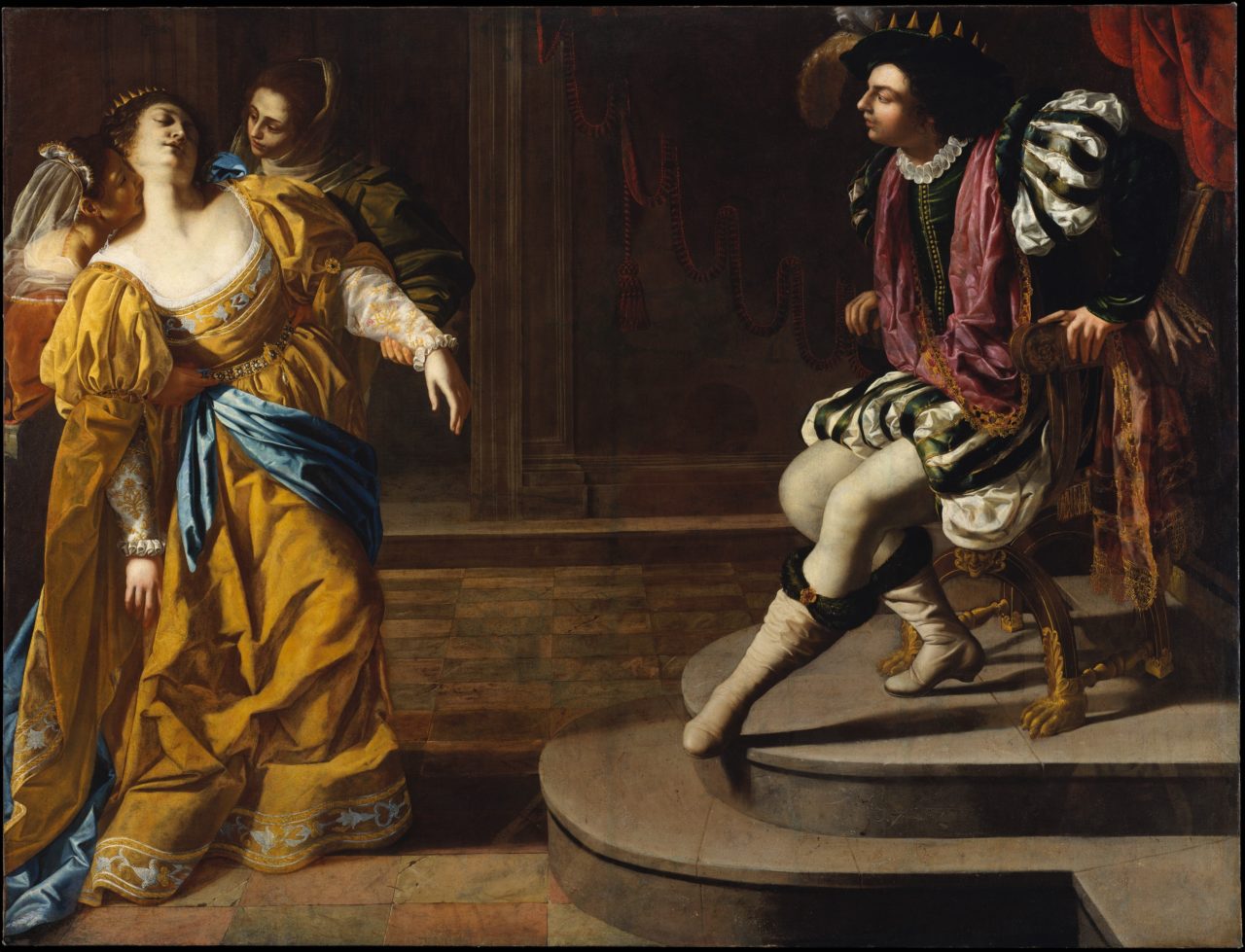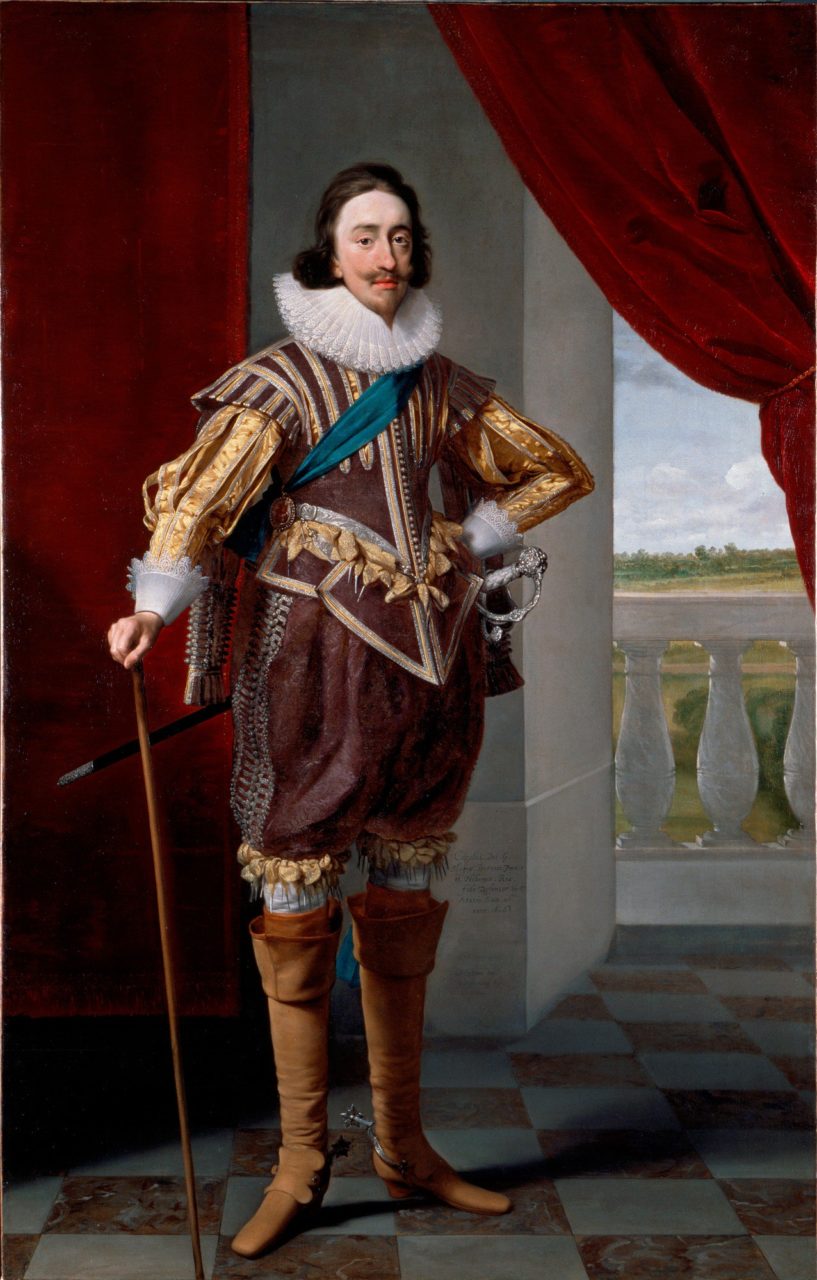A method of decoration using long parallel strips of fabric arranged to reveal a contrasting fabric underneath that was fashionable from the 15th-17th centuries.
The Details
A
ccording to Fashion: The Definitive History of Costume & Style (2012), “panes [are] a decoration on sleeves or men’s trunk-hose, made by slashing the fabric so that the lining or undergarments showed through” (Brown 451). In figure 1, the top of Saint Barbara’s sleeves and the large sleeves of the executioner feature paning. In figure 2, Ahasuerus’s sleeves and pumpkin-shaped hose (known as melon hose) both feature panes/paning.
According to The Berg Fashion Library:
“Paning is a decoration that started in the 15th-16th century produced by slashing the material into long, ribbon-like strips or by using ribbon lengths set close and parallel, joined above and below. Through the gaps part of the shirt or sleeves might be pulled out, or a contrasting coloured lining might be drawn out.”
Fig. 1 - Lucas Cranach the Elder (German, 1472-1553). The Martyrdom of Saint Barbara, ca. 1510. Oil on linden; 153.4 x 137.8 cm. New York: Metropolitan Museum of Art, 57.22. Rogers Fund, 1957. Source: Metropolitan Museum of Art
Fig. 2 - Artemisia Gentileschi (Italian, 1593-c.1656). Esther before Ahasuerus, 1628-1630. Oil on canvas; 208.3 x 273.7cm. New York: Metropolitan Museum of Art, 69.281. Gift of Elinor Dorrance Ingersoll, 1969. Source: Metropolitan Museum of Art
B
rown in Fashion: The Definitive History of Costume and Style goes on to explain the origin of paning:
“Paning is a decorative technique that stemmed from slashing, a technique that is produced from actually cutting the fabric to show the nice contrasting fabric underneath. This method is too destructive and this is where paning was invented. It is less destructive and garments have a longer life-span, just by using long stripes of fabric that is layered on top to show the contrasting colors of fabric. Also they like to incorporate another decorative feature of puffing (puffing out the inner fabric through the slits) with panes.” (451-453)
James Laver also notes the evolution from slashing to paning in his Costume of the Western World (1951): “When slashing was adopted it might take the form of short diagonal cuts or longer vertical incisions which formed narrow panels of material known as panes” (132). Daniel Mytens’ 1628 portrait of Charles I (Fig. 3) features panes that are clearly carefully finished to prevent fraying.
Fig. 3 - Daniel Mytens (Netherlandish, 1590-1647). Charles I, 1628. Oil on canvas; 219.4 x 139.1 cm. London: Royal Collection Trust, RCIN 404448. Source: Royal Collection Trust
References:
- Brown, Susan, ed. Fashion: The Definitive History of Costume and Style. New York: DK Publishing, 2012. http://www.worldcat.org/oclc/840417029.
- Laver, James. Costume of the Western World: Fashions of the Renaissance in England, France, Spain and Holland. New York: Harper & Brothers, 1951. http://books.google.com/books?id=4IkeAAAAIAAJ.
- “Panes.” The Berg Fashion Library. (n.d.). http://libproxy.fitsuny.edu:2105/view/bdfh/bdfh-div12237.xml (accessed 18 Feb. 2016).













